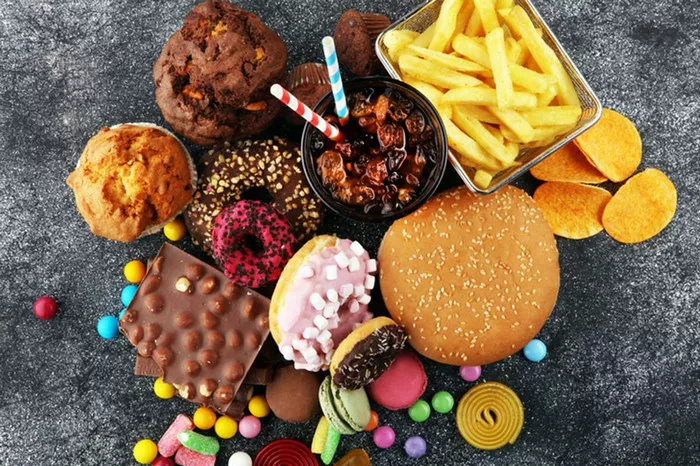In today’s modern diet landscape, added sugars have become ubiquitous, infiltrating a myriad of processed foods and beverages. While sugar can add flavor and palatability to various culinary creations, excessive consumption of sugar can have detrimental effects on health and well-being. Recognizing the signs of too much sugar intake is crucial for individuals seeking to optimize their dietary habits and mitigate the risk of metabolic disorders such as obesity, type 2 diabetes, cardiovascular disease, and dental caries. In this comprehensive article, we delve into the intricacies of excessive sugar consumption, unraveling the subtle clues and symptoms that may indicate an overindulgence in this sweet but potentially harmful substance.
Understanding Sugar: The Sweet Culprit
Before exploring the signs of excessive sugar intake, it is essential to grasp the role of sugar in the diet and its impact on overall health. Sugar, in its various forms, encompasses simple carbohydrates such as glucose, fructose, and sucrose, which are naturally present in fruits, vegetables, and dairy products, as well as added sugars found in processed foods, sweets, desserts, and sugary beverages.
- Natural Sugars vs. Added Sugars: Natural sugars occur naturally in whole foods and are accompanied by essential nutrients, fiber, and phytonutrients that contribute to overall health and well-being. In contrast, added sugars are sugars and syrups added to foods and beverages during processing or preparation, devoid of any nutritional value other than empty calories. Common sources of added sugars include table sugar (sucrose), high-fructose corn syrup (HFCS), honey, maple syrup, and agave nectar.
- Metabolic Effects of Sugar: Excessive sugar consumption can have profound effects on metabolism, leading to insulin resistance, dyslipidemia, inflammation, oxidative stress, and metabolic dysfunction. High intake of added sugars can overwhelm the body’s capacity to metabolize glucose efficiently, leading to elevated blood sugar levels, hyperinsulinemia, and dysregulation of appetite, energy balance, and lipid metabolism.
- Health Implications of Sugar: Chronic consumption of excessive sugar has been linked to an array of adverse health outcomes, including weight gain, obesity, type 2 diabetes, cardiovascular disease, fatty liver disease, metabolic syndrome, and dental caries. Sugar-sweetened beverages, in particular, have been implicated as significant contributors to excess calorie intake, weight gain, and metabolic disturbances, highlighting the need for public health interventions to reduce sugar consumption and promote healthier dietary patterns.
Signs of Excessive Sugar Consumption: Unraveling the Clues
Identifying the signs of too much sugar intake can be challenging, as sugar is often hidden in a variety of processed foods and beverages under different names and disguises. However, several subtle clues and symptoms may indicate an overconsumption of sugar and warrant closer attention to dietary habits and lifestyle choices.
- Intense Sugar Cravings: Cravings for sugary foods and beverages, particularly sweets, desserts, candies, and sugary snacks, may indicate a habitual consumption of excess sugar. The addictive properties of sugar, coupled with its rewarding taste and hedonic appeal, can drive compulsive eating behaviors and cravings for sweet treats, leading to a cycle of overconsumption and dependence on sugar for pleasure and emotional comfort.
- Energy Fluctuations: Fluctuations in energy levels, mood, and mental clarity may occur as a result of blood sugar spikes and crashes associated with excessive sugar intake. Consuming large quantities of sugar can lead to rapid increases in blood glucose followed by subsequent insulin secretion and glucose uptake by cells, resulting in a transient surge of energy and euphoria (sugar high) followed by a subsequent energy crash and feelings of fatigue, lethargy, and irritability (sugar crash).
- Weight Gain and Obesity: Excessive sugar consumption is a significant contributor to weight gain, obesity, and central adiposity, particularly when consumed in the form of sugar-sweetened beverages, sweets, desserts, and processed foods high in added sugars and refined carbohydrates. High intake of sugary foods and beverages can contribute to excess calorie intake, impaired satiety signaling, and dysregulation of appetite, leading to positive energy balance, fat accumulation, and weight gain over time.
- Increased Appetite and Overeating: Consuming foods and beverages high in added sugars can disrupt appetite regulation and satiety signaling, leading to increased hunger, cravings, and overeating. High-sugar foods tend to be low in satiety-promoting nutrients such as protein, fiber, and healthy fats, which can lead to rapid spikes and drops in blood sugar levels, triggering hunger signals and prompting further consumption of sugary snacks and meals.
- Dental Issues: Excessive sugar consumption is a major risk factor for dental caries, cavities, and oral health problems. Sugars provide a readily available energy source for oral bacteria, particularly Streptococcus mutans, which metabolize sugars to produce acids that erode tooth enamel and promote the formation of dental plaque and cavities. Frequent consumption of sugary foods and beverages, particularly between meals and before bedtime, can increase the risk of dental decay and compromise oral hygiene.
- Skin Problems: High intake of sugar and refined carbohydrates has been implicated in the development of skin conditions such as acne, eczema, and premature aging. Elevated blood sugar levels can trigger inflammation, oxidative stress, and glycation reactions that damage collagen and elastin fibers in the skin, leading to skin aging, wrinkles, and impaired wound healing. Additionally, sugar consumption may disrupt hormonal balance and increase sebum production, contributing to acne development and exacerbation.
- Digestive Distress: Some individuals may experience digestive discomfort, bloating, gas, and diarrhea as a result of excessive sugar consumption, particularly when consuming foods high in added sugars, artificial sweeteners, and sugar alcohols. High intake of fructose, in particular, can cause gastrointestinal symptoms such as abdominal pain, bloating, and diarrhea due to malabsorption and fermentation in the colon.
- Impaired Metabolic Health: Chronic consumption of excess sugar has been linked to insulin resistance, dyslipidemia, metabolic syndrome, and non-alcoholic fatty liver disease (NAFLD), all of which are risk factors for type 2 diabetes and cardiovascular disease. Excessive sugar intake can lead to elevated blood sugar levels, insulin resistance, and dysregulation of lipid metabolism, contributing to the development of metabolic abnormalities and systemic inflammation.
Conclusion: Cultivating Sugar Awareness and Balance
In summary, recognizing the signs of excessive sugar consumption is essential for individuals seeking to optimize their dietary habits and promote overall health and well-being. Intense sugar cravings, energy fluctuations, weight gain, increased appetite, dental issues, skin problems, digestive distress, and impaired metabolic health are among the common signs of too much sugar intake that may warrant closer attention to dietary patterns and lifestyle choices.
Empowering awareness, education, and mindful eating practices are key strategies for reducing sugar consumption, fostering a balanced and nutrient-rich diet, and promoting optimal health outcomes. By prioritizing whole, minimally processed foods, reducing intake of added sugars and sugary beverages, and incorporating nutrient-dense sources of carbohydrates, protein, fiber, and healthy fats into meals and snacks, individuals can cultivate sugar awareness and achieve a healthier relationship with food, nourishing their bodies and minds for long-term vitality and well-being.



























